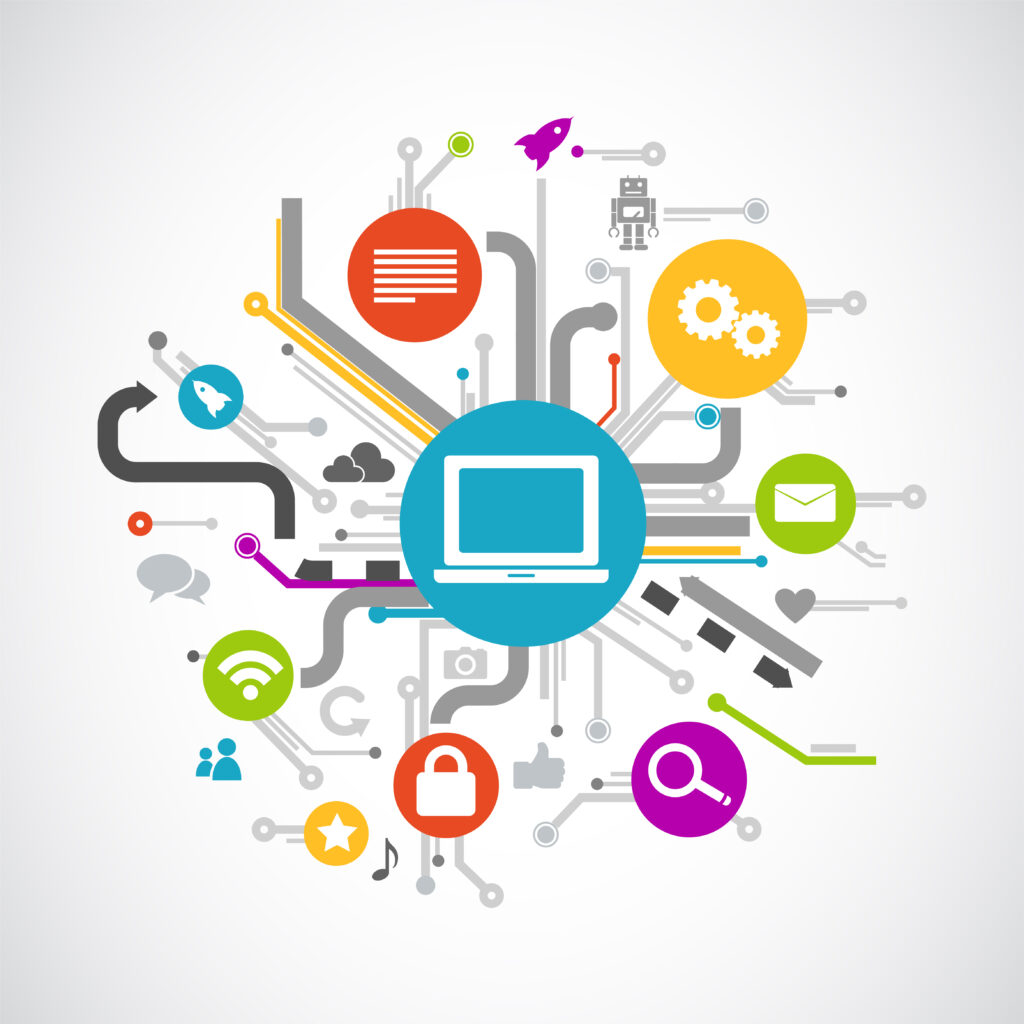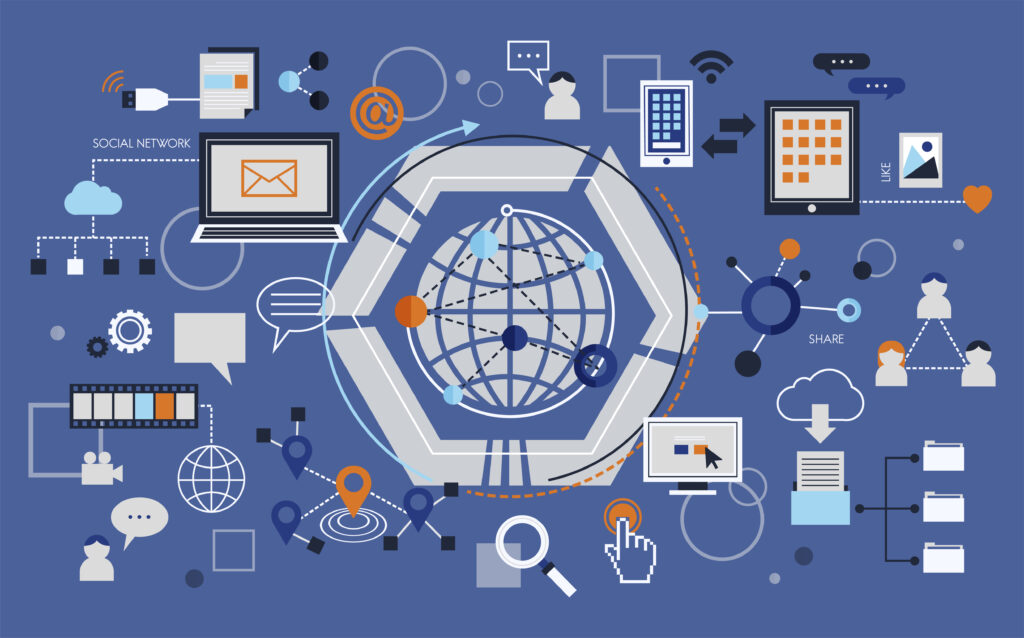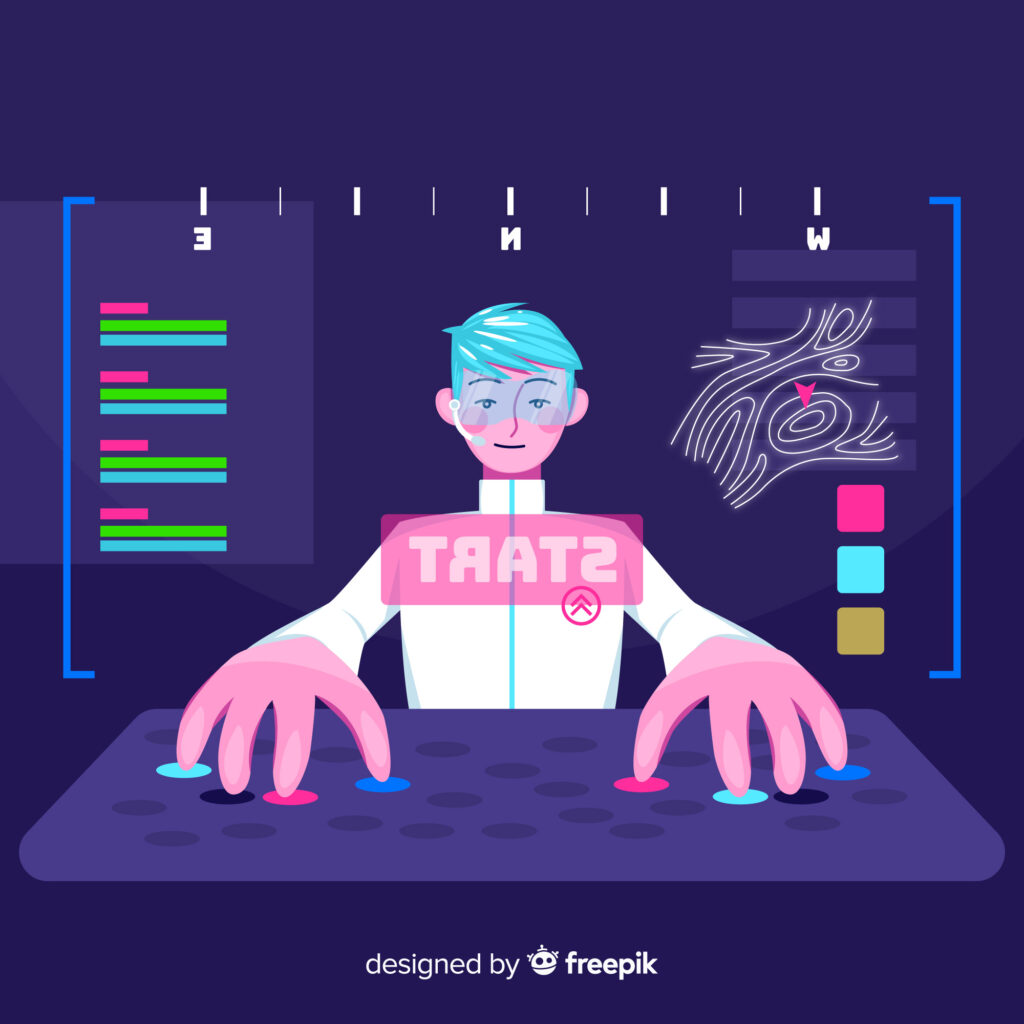Introduction to General Dynamics of Information Technology
Table of Contents

Information Technology (IT) is the silent force that powers our modern world. From the devices we use to the software that runs our applications, IT permeates nearly every aspect of our lives. But it’s not a static entity; instead, IT operates in a dynamic landscape that’s constantly evolving. In this blog post, we’ll delve into the fascinating world of the “General Dynamics of Information Technology.” We’ll explore how IT has transformed over the years, dissect its core components, dive into the latest trends, understand its role in business and daily life, and address the challenges it brings. By the end of this journey, you’ll gain a deeper appreciation for the ever-changing realm of IT.
I. The Ever-Changing Landscape of IT

The IT landscape is a story of continual evolution, driven by innovation and necessity. Consider how far we’ve come since the early days of computing when room-sized machines filled with vacuum tubes were considered cutting-edge technology. Today, we carry more computing power in our pockets than those machines ever had.
The advent of the internet was a pivotal moment in IT history. It connected the world in unprecedented ways, fostering communication, collaboration, and the exchange of information on a global scale. It opened the doors to e-commerce, social media, and countless other digital services that have become integral to our lives.
Moreover, cloud computing has revolutionized the way we store and access data. It’s enabled businesses and individuals to tap into vast computing resources without the need for physical hardware. This shift has not only increased efficiency but also lowered costs.
In essence, the general dynamics of IT have propelled us into the digital age, transforming how we work, communicate, and interact with the world around us.
II. The Core Components of IT Dynamics
To understand the dynamics of IT, we must first grasp its fundamental components:
Hardware:
Hardware encompasses the physical devices and infrastructure that make up the IT ecosystem. This includes computers, servers, smartphones, routers, and more. Hardware forms the foundation upon which the digital world is built.
Software:
Software refers to the programs and applications that run on hardware for user interaction. From operating systems like Windows and iOS to productivity suites like Microsoft Office and cloud-based software like Google Docs, software is what enables us to perform tasks, solve problems, and interact with data.
Data:
Data is the lifeblood of IT. It includes everything from text documents and images to complex databases and sensor readings. Data is what fuels decision-making, innovation, and analysis in the digital age.
People:

Last but certainly not least, people are a vital component of IT dynamics. From the software developers who create applications to the end-users who utilize them, human expertise is the driving force behind IT’s evolution and success.
These four components are interconnected, and changes in one can have a ripple effect throughout the IT ecosystem. For instance, advancements in hardware technology can enable the development of more powerful software applications, while data analysis by skilled professionals can reveal insights that shape future innovations.
Maintaining a balance among these components is crucial for ensuring the smooth operation of IT systems. When one component lags or dominates excessively, it can lead to inefficiencies and challenges in the IT landscape.
III. Current Trends Reshaping IT Dynamics
To appreciate the dynamics of IT, we must also keep an eye on the latest trends that are reshaping the landscape. Here are a few of the most notable ones please consider:

Artificial Intelligence (AI):
AI is no longer the stuff of science fiction; it’s a reality that’s transforming industries. Machine learning algorithms can analyze vast amounts of data to make predictions, automate tasks, and even enhance decision-making.
Internet of Things (IoT):
IoT is the concept of connecting everyday objects to the internet, enabling them to send and receive data. From smart thermostats that optimize energy use to wearable fitness trackers, IoT devices are becoming ubiquitous.
Cloud Computing:
The cloud continues to expand, offering scalable, cost-effective solutions for data storage, processing, and software deployment. It’s the backbone of many modern businesses and services.
Cybersecurity:
As technology advances, so do the threats it faces to any one. Cybersecurity is an ever-pressing concern, and organizations are investing heavily in protecting sensitive data and infrastructure.
These trends are not isolated; they often intersect and complement each other. For example, AI can enhance IoT devices’ functionality by enabling them to make more intelligent decisions based on the data they collect. The cloud provides the necessary infrastructure for AI and IoT applications to thrive. Understanding these trends is key to staying competitive and innovative in the IT landscape.
IV. The Role of IT in Business and Everyday Life

In the business world, IT is no longer just a support function; it’s a strategic enabler. It streamlines operations, enhances productivity, and provides a competitive edge. Consider how businesses use IT to automate routine tasks, manage inventory, reach customers through e-commerce, and make data-driven decisions.
For example, data analytics powered by IT can reveal customer preferences and market trends, helping businesses tailor their products and marketing strategies. Customer Relationship Management (CRM) software allows companies to maintain and nurture customer relationships at scale.
Beyond the business realm, IT has woven itself into the fabric of our daily lives. Our smartphones are not just communication devices; they are personal assistants, entertainment centers, and navigation tools. We use IT to manage our finances, stay informed about world events, and connect with friends and family worldwide through social media.
V. Challenges and Concerns in IT Dynamics
While IT brings incredible benefits, it also poses challenges and concerns:
Cybersecurity Threats:

With greater reliance on technology comes an increased risk of cyberattacks. Hackers and malicious actors constantly evolve their tactics, targeting everything from personal data to critical infrastructure.
Data Privacy:
The collection and use of personal data by tech companies have raised concerns about privacy. Regulations like GDPR in Europe and CCPA in California are addressing these issues, but the debate continues.
Digital Divide:
While technology has the potential to improve lives, not everyone has equal access. The digital divide exists, with disparities in internet access, computer literacy, and technology adoption.
Ethical Dilemmas:
As AI and automation advance, ethical questions arise. Who bears responsibility for AI decisions? How do we ensure fairness and transparency in algorithms?
VI. FAQs – General Dynamics of Information Technology

Q1: What does the term “IT dynamics” mean?
A1: IT dynamics refer to the ever-changing and interconnected nature of Information Technology. It encompasses the evolution of hardware, software, data, and human expertise in the digital age.
Q2: Why should I care about IT dynamics?
A2: Understanding IT dynamics is crucial for staying relevant in a technology-driven world. It empowers individuals and businesses to leverage technology for innovation and productivity.
Q3: What are some recent IT trends I should be aware of?
A3: Recent IT trends include AI, IoT, cloud computing, and cybersecurity. These trends are shaping industries and creating new opportunities for growth.
Q4: How can I protect my data in the digital age?
A4: Data protection involves using strong passwords, regular software updates, and cybersecurity practices. Additionally, being cautious about sharing personal information online is essential.
Q5: What is the future of IT dynamics?
A5: The future of IT dynamics is marked by continued innovation, increased connectivity, and ethical considerations. It will continue to transform industries and our way of life.
Conclusion
In conclusion, the General Dynamics of Information Technology is a captivating journey through the evolution, components, trends, and impact of IT in our world. It’s a dynamic landscape where hardware, software, data, and human expertise converge to drive progress and innovation. Understanding IT dynamics is not only beneficial but essential in today’s digital age.
As we embrace the ever-changing IT landscape, it’s crucial to stay informed, adapt to new technologies, and address the challenges that arise. With responsible use and ethical considerations, we can harness the power of Information Technology to create a brighter, more connected future for all. So, keep exploring, keep innovating, and keep riding the wave of IT dynamics into the exciting digital horizon.
Please check this Also :
After Shave: A Guide to Smooth and Refreshed Skin After Shaving
The Ultimate Guide to After Shave For Men
Unveiling the Beauty of After Shave for Women
Unveiling the Benefits of After Shave Balm: Your Guide to Smooth and Soothed Skin
Decoding the Benefits: What Does After Shave Do for Your Skin?
Gillette After Shave Lotion: Elevating Your Shaving Experience
Nivea Men Sensitive Aftershave Lotion: Gentle Care for Your Post-Shave Skin.
Proraso After Shave Balm for Men: A Gentle Finish to Your Shave.
Edge+ Cooling Post Shave Lotion: A Refreshing Touch for Your Skin
Bevel After Shave Balm for Men: Elevate Your Post-Shave Experience
Pacific Shaving Company Caffeinated Aftershave: Energize Your Post-Shave Routine
Harry’s Post Shave – Post Shave Balm for Men: Nourishment for Your Skin
Classic Elegance And the Timeless Charm of Old Spice After Shave
Revive Your Skin: Unveiling the Magic of Biotique’s Wild Grass After Shave Gel
Dollar Shave Club Shave Butter: Your Ultimate Shaving Companion
Post-Shave Luxury: Exploring the Enchantment of THAYERS After Shave